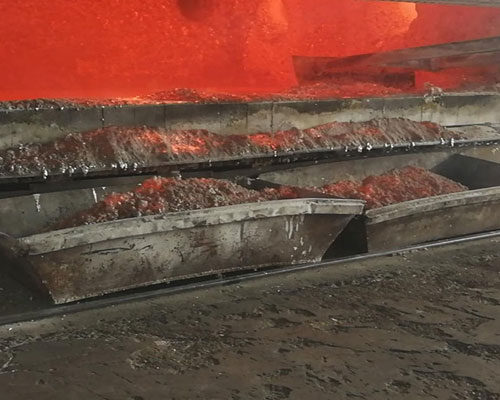Molten Aluminium Foundry Flux
Category
Flux seriesAbout This Project
Molten Aluminium Foundry Flux is used to describe all molten aluminum processing using compounds. These compounds are usually inorganic and can serve a variety of functions, such as degassing, magnesium reduction, impurity removal, and alloying. Foundry Flux also includes chemical gases or inert gases for melt processing. Metal removes gaseous inclusions or metal impurities.
The main chemical components of Molten Aluminium Foundry Flux
Foundry Flux (powder, granular form) is usually composed of chlorides and fluorides and additional additives that give special properties.
Most Foundry Flux is based on a mixture of KCl and NaCl salts to form a low temperature eutectic.
Another common ingredient of Foundry Flux is sodium fluoride NaF, which forms a ternary eutectic with KCl and NaCl.

The role of fluoride in Foundry Flux
Alkali metal fluoride salts are used as surfactants to reduce the surface tension between the flux and the metal on the one hand, and reduce the surface tension between the flux and the oxide on the other hand. Chloride exhibits this characteristic to a lesser extent.
Fluoride salts and alkali metal oxides have dissolving power (albeit to a small extent), which helps them penetrate the oxide film in the slag and grow on the furnace wall. This leads to improved wettability, which helps the separation of oxide inclusions in the melt and the separation of aluminum metal from tin dross.
After the cast aluminum alloy is melted, should it be refined and deteriorated or slagging first?
It should be refined first, then slag, sprinkled with covering agent and deteriorated. There are also slag removal before refining, but because the slag and aluminum are not easily separated at this time, the loss is large.
Modification treatment is to change the structure of silicon in the aluminum alloy to improve performance, while the refiner is to refine the grain to achieve the purpose of improving performance. Both can be used at the same time
What is the difference between the structure and performance of cast aluminum alloy before and after modification?
Before deterioration: coarse grains, low elongation, and low tensile strength.
After modification: the grains are refined, the extensibility is improved, and the tensile strength is improved.
The essence of metamorphic treatment is to change the form of silicon in the tissue.
No silicon is added to pure aluminum, which lacks fluidity and cannot be used for casting alloys.
After silicon is added, the structure of silicon is very important. It is better to have a short rod shape. However, under natural cooling conditions, it tends to be irregular polygons, splitting the matrix structure and reducing mechanical properties. After adding proper amount of sodium (sodium salt) and strontium (strontium salt), it can effectively change the unfavorable shape of silicon, make it tend to be short rod shape, and improve the mechanical properties.
Therefore, eutectic and hypereutectic aluminum alloys must be modified; hypoeutectic alloys must also be modified when their solidification rate is slow.

